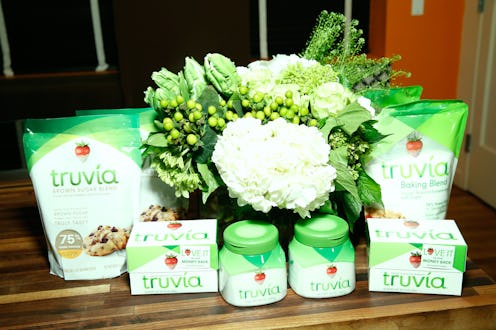News
Ninth Grader Makes Scary Truvia Discovery

You probably don't expect your sweetener to be an effective bug-killer. But that's exactly what a father-son duo and fellow researchers found about popular artificial sweetener Truvia, discovering that the insecticide erythritol was the main component of Truvia. We know what you're thinking: We knew Truvia was too good to be true! But not so fast — erythritol may be toxic for insects, but it does seem safe for human consumption.
Basically, Truvia, which touts itself as a natural sweetener, gets its sweetness from the leaves of the stevia plant. The company's website outlines the process used to make Truvia in six simplified steps, from harvesting the stevia plant in the field to adding the extract to the final packaged product. The last step notes that the stevia extract is blended with erythritol crystals and natural flavors.
So what led to the discovery that these erythritol crystals can also kill insects? A ninth-grader's science project.
Ninth-grader Simon D. Kaschock-Marenda, one of the study authors, asked his dad, Daniel Marenda, another co-author of the study, if he could examine the effects of sugar and sugar substitutes on the longevity of the fruit fly. Together, they raised baby fruit flies in Daniel's lab on different compounds, each consisting of a type of sugar or artificial sweetener. After six days, all the flies in the Truvia vials had died.
After repeating the experiment, the two determined that flies raised in the Truvia compounds only lived 5.8 days compared to 38.6-50.6 days for flies raised on control and experimental foods without Truvia. Flies raised on foods containing Truvia also exhibited impaired motor skills before their deaths.
After figuring out that the toxic component in Truvia was erythritol, the researchers also discovered that the flies seemed to prefer it over other sweeteners. When given the choice between erythritol and sucrose, flies consumed more than twice as much of Truvia.
What Exactly Is Erythritol Anyway?
Erythritol is part of a class of compounds called sugar alcohols and has significantly less calories than regular table sugar (it has six percent of the calories and 70 percent of the sweetness). It's occurs naturally in many fruits, like melons and grapes. It comes in both granulated and powdered form and can be found in chocolates, candies, yogurts, and popular beverages like Vitaminwater.
Is It Safe For Human Consumption?
The human body lacks the enzyme to break down erythritol, which is a good thing. That means it passes through us unchanged without the harmful metabolic effects of regular sugar or the digestive issues associated with other sugar alcohols.
Consumption of erythritol also does not change levels of insulin or blood sugar. The U.S. Food and Drug Administration deemed erythritol as a safe food additive in 2001.
What This Means For Insecticide Development
In a nutshell, this is pretty major. It could set the foundation for developing a highly effective insecticide that's totally safe for humans.
"We are not going to see the planet sprayed with erythritol, and the chances for widespread crop application are slim," co-author Sean O'Donnell, a professor of biology at Drexel University in Philadelphia, said in a statement. "But on a small scale, in places where insects will come to a bait, consume it and die, this could be huge."
The scientists hope to test the effects of erythritol on other pests next, like termites, bed bugs, cockroaches, and ants. "I feel like this is the simplest, most straightforward work I've ever done," O'Donnell said in the press release. "But it's potentially the most important thing I've ever worked on."
Images: Getty Images (4)